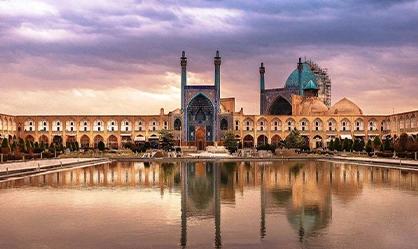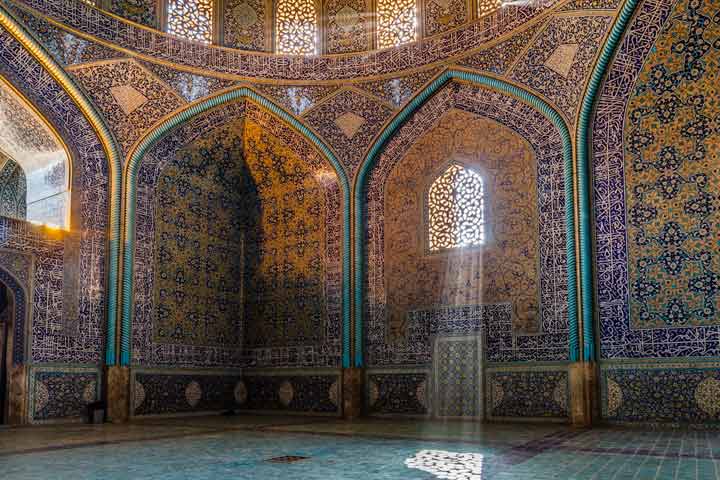Where is the city of Isfahan?
Isfahan, with an area of 220 square kilometers, is located approximately in the center of the country and is also known as the 14th most populated metropolis in the Middle East. Isfahan is located at an altitude of 1570 meters above sea level, and since Zayandehroud passes through the middle of the city, Isfahan is located on a flat plain.
Naqsh Jahan square, one of the most beautiful places to visit in Isfahan
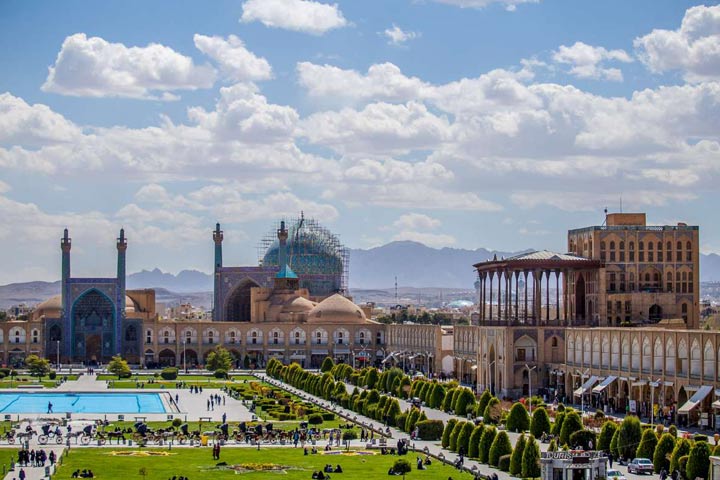
Naqsh Jahan Square is the spot in Isfahan that has recorded a series of historical narratives in its mind. Among the sights of Isfahan, this square remembers the loud sound of joys, wars, army parades and even every single scene of the polo game that happened throughout history. The square that the Timurids built in the center of the city expanded during the rule of Shah Abbas I and gradually reached this greatness and glory during different days.
The autumn season of this square is one of the most beautiful images that can be recorded in your mind. If you like to visit the famous places of Isfahan in autumn, you must go to Naqsh Jahan square and sit in the mild sun by the clear pond of the square and treat yourself to the colors and sounds.
It is a bit difficult to go to Naqsh Jahan square by private car and you may have trouble to park your car. Remember that if you go by car, you can park your car in the alleys behind Naqsh Jahan and in the public parking lots provided for travelers.
Address: Imam Hossein (AS) Square - Sepah St
Visiting hours: 24/7
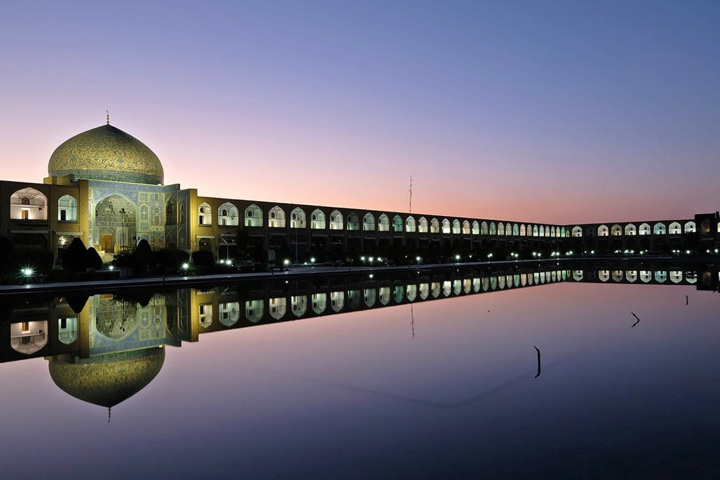
Sheikh Lotfollah Mosque, one of the famous places in Isfahan
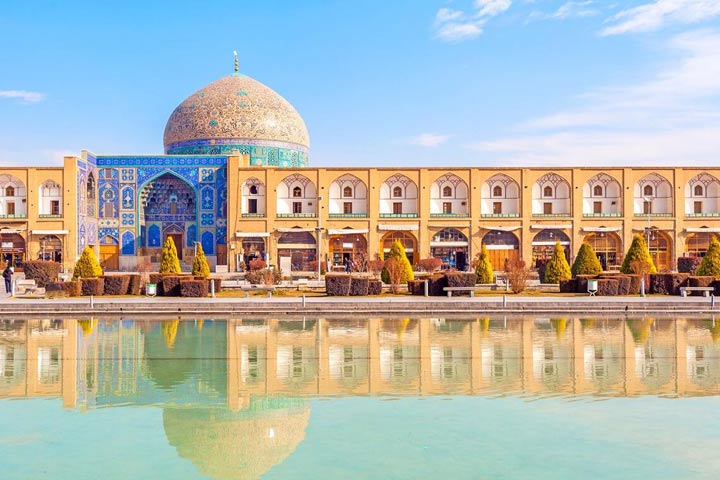
Sheikh Lotfollah Mosque|Sightseeing in Isfahan
It is one of the most famous sightseeing places in Isfahan, which has amazing details. This mosque can keep you amazed for a long time
The mosque, which was built without a minaret and courtyard for courtiers, takes on different colors during the day. Khaki, pink and gray are these colors. Sheikh Lotfollah Mosque was placed in the list of national monuments of Iran on January 15, 1310, with number 105, and after that, a joint stamp with the image of this building was issued from China to make the fame of this work more global. The dome of this mosque is considered to be the roundest dome among the mosques in the world. The interior decorations, design and color of the tiles show the peak of the beauty of Iranian-Islamic architecture.
Address: Imam Square, Isfahan
Visiting hours: 9 am to 12:30 pm - 2 pm to 6 pm
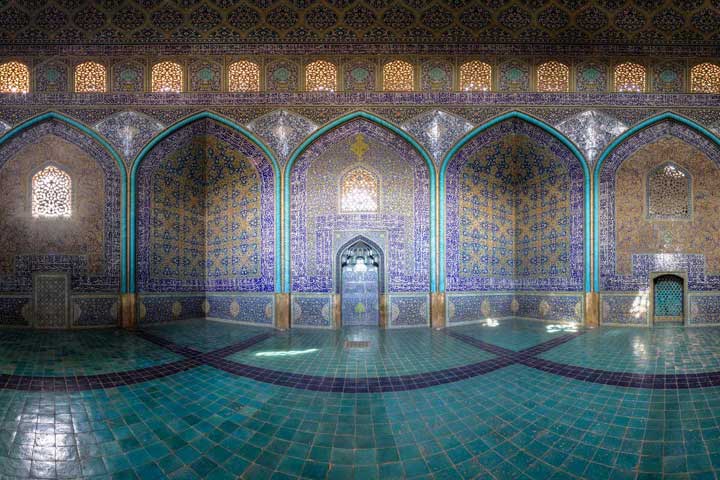
Khajo Bridge, a symmetrical crown on the head of Zayandeh Rud
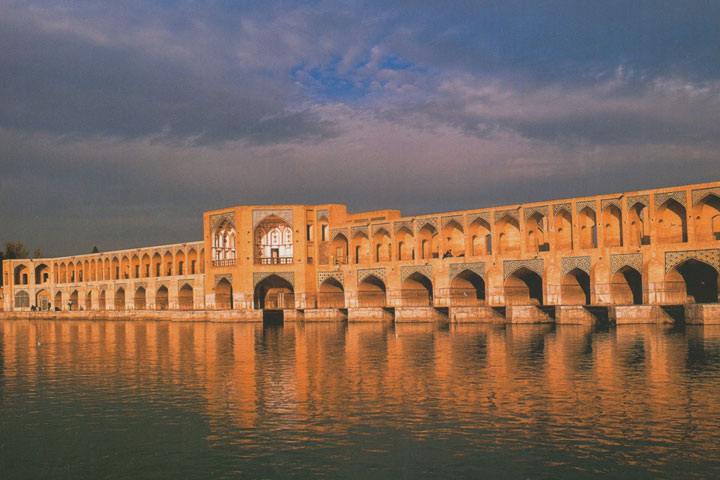
This beautiful work was built during the reign of Shah Abbas II and it is considered one of the architectural wonders of its time. Khajo Bridge was built with a symmetrical design over the Zayandeh Rud River. This work has functions like a dam and regulation of water flow and has remained healthy and stable throughout history.
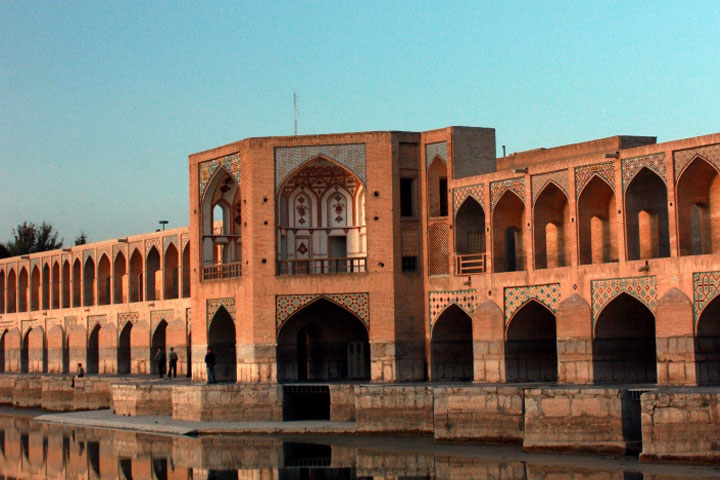
Khajo Bridge of Isfahan was registered as a national landmark of Isfahan on 15 January 1310 to preserve the historical value of this building forever. Right in the middle of this bridge, a small building with simple decorations but befitting the royal family was built so that the Shah's family could use it. The view of Zayandeh Rud from the top of this bridge is full of peace and happiness. The reflection of the image of the sky and the bridge in the heart of the river is a good feeling that embraces you. Especially if you visit this place at sunset, you can see one of the most beautiful places in Isfahan.
Address: Southern end of Chaharbagh Khajo and at the eastern end of Kamaluddin Ismail Esfahani Street
Visiting hours: day and night
Thirty-three bridges, the symbol of a city that has stories
Thirty-three bridges of Isfahan are one of the main symbols in depicting this city. Among the sights of Isfahan, thirty-three bridges can be considered one of the most important. A historical bridge whose foundations are being destroyed today and has lost the awe of the birth of its river, but it is still beautiful and amazing.
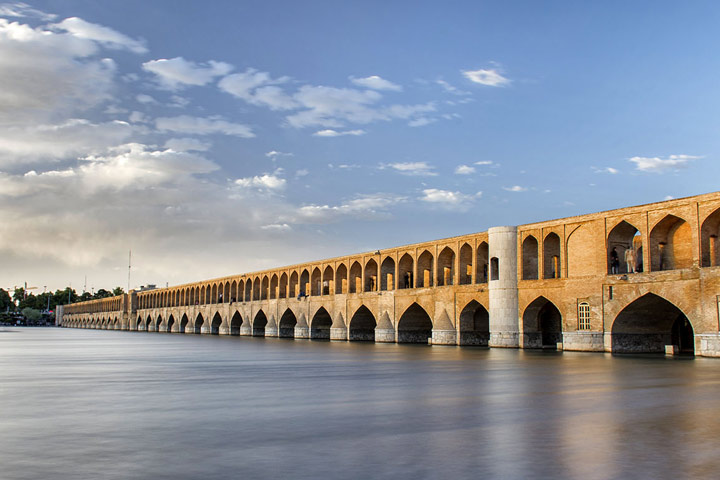
This bridge was built during the reign of Shah Abbas and by Allahvardi Khan to be an eternal symbol for Isfahan. Thirty-three bridges have hosted many important celebrations and events throughout history. Celebrations such as: Ab Pashan, Nowruz and Haj Shovian, which bring many people together for empathy and happiness.
Thirty-three bridges with 33 spans, 295 meters long and 14 meters wide, are one of the architectural marvels of the past and there are different opinions about it. This work was registered as one of Iran's national works on 15 January 1310 with registration number 110. Go to see the thirty-three bridges and enjoy its beauty, especially at night, when the illuminations help to complete its splendor, and make an unforgettable memory.
Address: at a distance of 1800 meters from Khajo Bridge
Visiting hours: day and night

Palace of forty columns, image of dancing in the water

Chehelston Palace of Isfahan was built during the reign of Shah Abbas I and was completed and opened during the reign of Shah Abbas II. This building, like many other historical works of Iran, was built to show off the power and glory of the government of the time, and its beauty is so countless that it turned it into a paradise in the heart of Isfahan.
Among the sights of Isfahan, gardens play a major role, and the garden that surrounds the Forty Pillar Palace is no exception. This magnificent work was registered in the national register on January 15, 1310 with number 108.
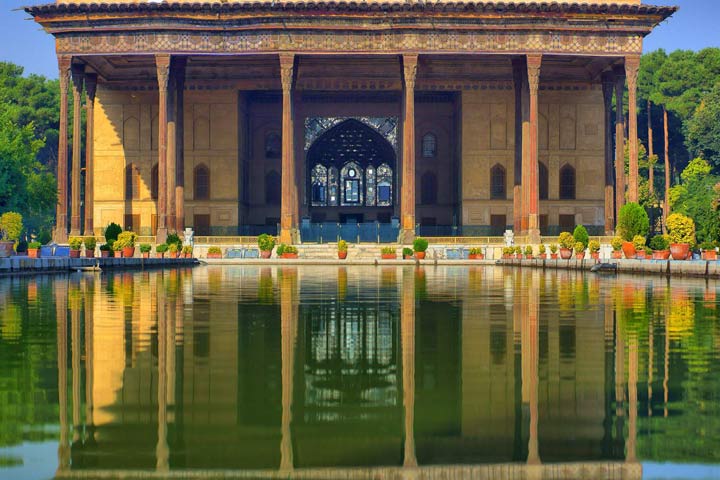
The tiling, painting and mirror work of the forty columns are unique and praiseworthy. This palace has 20 long columns, which doubles by standing out in the water of the pond in front of it. Of course, something else is said about this naming, and that is the role of the number 40 in the magnificence and splendor of Persian literature.
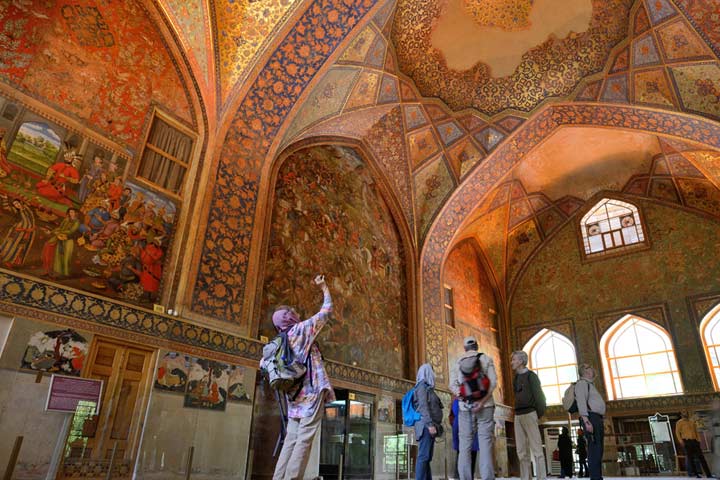
Every corner of forty columns has something to surprise and surprise to fill your eyes with beauty. Currently, they use this huge collection as a museum and display various works in it, such as:
1- Pottery collection, the first sample of tiles, made in Isfahan
2- Collection of abgineh, rugs, Kufic manuscripts of the Qur'an
3- The collection of the oldest prehistoric coins
4- Collection of works of the historical period and works of the Islamic era
5- Collection of works of the Safavid era, which includes all types of marriage deeds from the 9th century onwards until the end of the Qajar period.
6- A collection of all kinds of stone inscriptions
7- Collection of old carpets: The carpets in this collection date back to 400-500 years ago. Its two carpets have no equal in the world and are decorated with divine verses.
Address: Imam Hossein Square - Stendari St
Visiting hours: 9:30 - 15:45
Chahar Bagh School, the last wall that went up in the Safavid era

Chaharbagh School of Isfahan, which takes its name from its four porches, is considered one of the most amazing places to visit in Isfahan, and many tourists have spoken about its exclusive features. This building, which is also known as Madrasah Shah and Sultan Hossein Madrasah, is the last building built during the Safavid era. Chahar Bagh is one of the special schools of religious sciences, which was dedicated to the training and education of students with the financial support of Faraun. This building has complete beauty with all its impressive features.
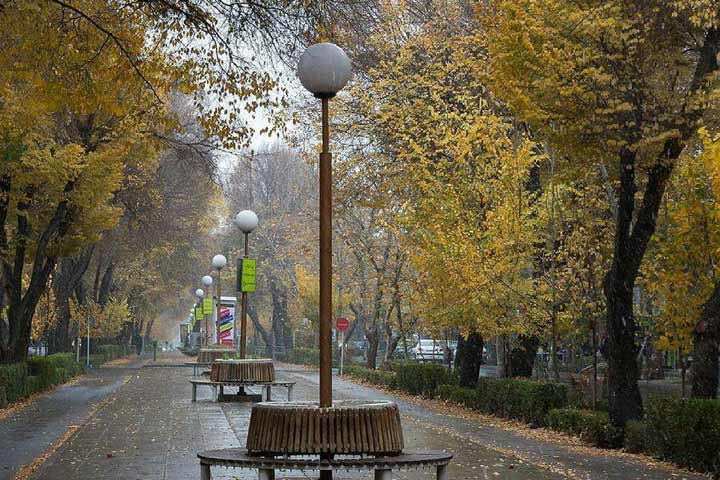
From the knot of porcelain and tiling to all the design and role that has been done in the external and internal decorations of the building and its cells to create a lasting image. Chaharbagh school was reopened after Shahrivar 1320 and in 1323 a library named Farhang Library was built instead of its old library.
After the victory of the revolution, the name of Chaharbagh School and its library was changed to "Imam Jafar Sadiq Seminary" and "Imam Jafar Sadiq Public Library". This school is now one of the student schools of Isfahan Seminary.
Address: Chaharbagh Street - Chaharbagh School
Visiting hours: 9:00 a.m. - 5:00 p.m
Hasht Behesht mansion, where was the most beautiful garden in the world
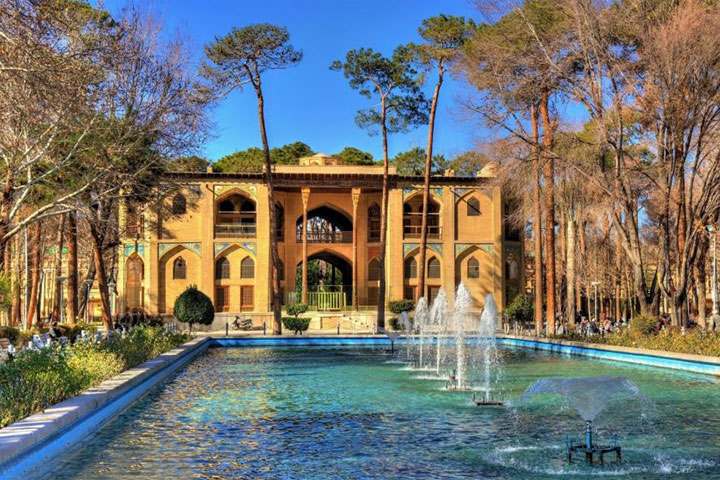
The vast building, which was considered one of the most amazing sights in Isfahan at the beginning, was built by the order of Shah Ismail. Hasht Behesht underwent many changes over the course of time and parts were added or subtracted from it. This work, which had surprised foreign tourists, is considered one of the special works of Safavid. A beautiful and aristocratic pavilion was built in the middle of the garden to face a dreamy landscape. Hasht Behesht mansion was registered in the list of national monuments of Iran on 22nd of Azar 1313.
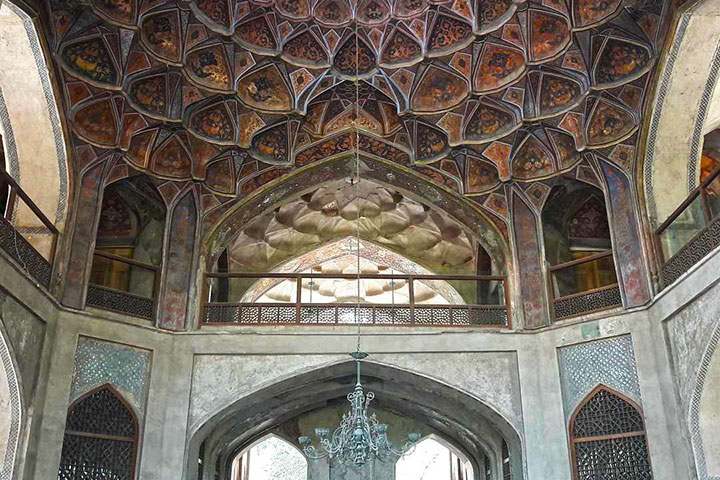
The doors of Hasht Behesht Palace of Isfahan were opened by the Safavids and they decorated it, but in the Qajar era, it underwent so many changes and reduced its beauty and decoration that they shattered that dream image a little. If you travel to Isfahan, be sure to see Hasht Behesht, walk in its vast beauty and take a breath of fresh air.
Address: Chaharbagh Esfahani St
Visiting hours: 9:00 a.m. to 5:30 p.m
Minarjanban, Ilkhani architectural dance
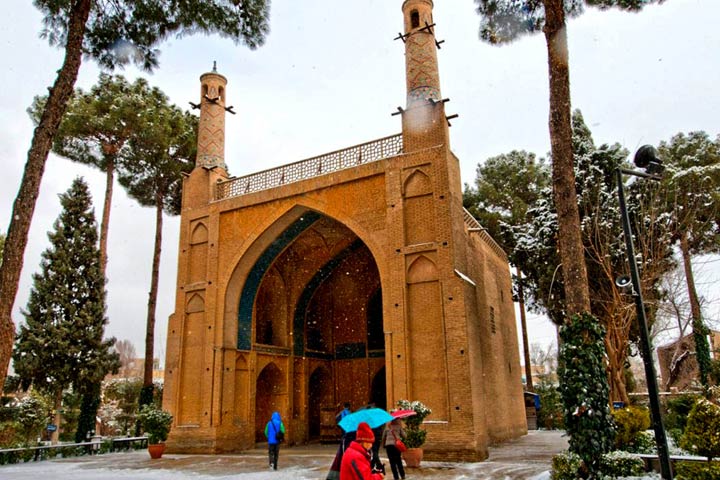
Isfahan minaret can be included in the list of the wonders of Isfahan. An amazing building that has a simple shape, but its special feature is that it shakes in place! This work, which is in the list of national works of Iran, is the burial place of a mystic named "Uncle Abdullah Karladani".
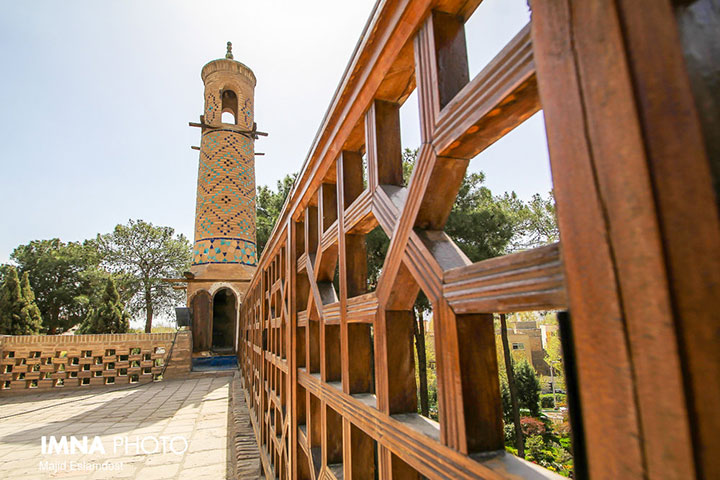
Each of these two minarets has a width of nine meters and a height of seventeen meters, and small tiles of turquoise and azure water are placed on top of them, which increases intimacy. Manarjanban is located at the 6th kilometer of Isfahan to Najaf Abad road. Do not leave Isfahan without seeing this amazing work.
Address: Atashgah Boulevard - Karladan neighborhood
Visiting hours: 9:00 - 16:30
Imam Mosque, a gift to Shah Tahmasab
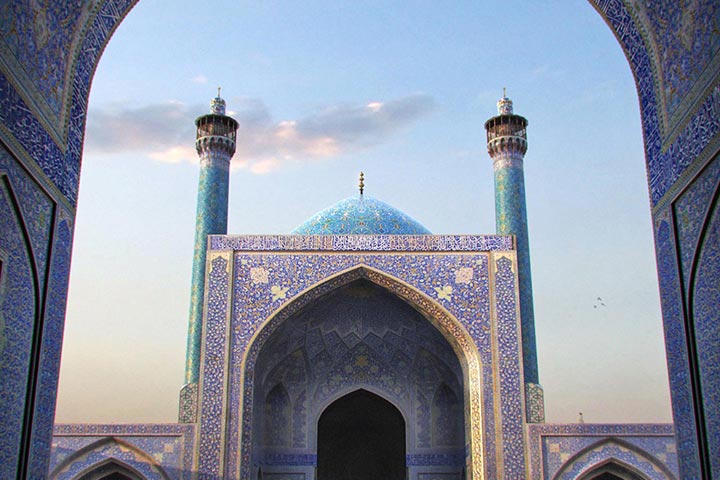
The Imam Mosque of Isfahan, which is also called the Shah Mosque, is one of the most prominent works of Iranian-Islamic architecture. This magnificent building was built during the Safavid era by order of Shah Abbas to be a gift to the soul of Shah Tahmasb. Its architect was Professor Ali Akbar Esfahani and the supervisor of the building was Mohib Ali Beykullah. And calligraphers such as Alireza Abbasi, Abdul Baghi Tabrizi, Mohammad Reza Emami, and Mohammad Saleh Emami wrote inscriptions in it.
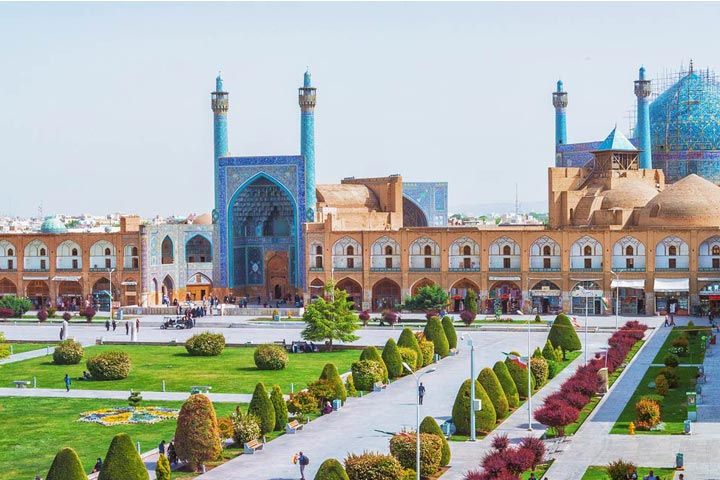
This work is very important in terms of tiling, interior decorations and carpentry works. The Imam Mosque was registered as one of Iran's national monuments on January 15, 1310 with registration number 107, and it was also registered in the UNESCO World Heritage List along with Naqsh Jahan Square.
Address: Naqsh Jahan Square
Visiting hours: 9:00 to 17:00
Sightseeing places of Khomeini in the city of Isfahan | A mountainous city with good weather
Four Abbasid gardens, breathing under the shade of plane trees

In the city of Isfahan, there have been many Chaharbaghs, one of the most beautiful of which is the Abbasi Chaharbagh. A street surrounded by beautiful green trees. Chaharbagh Abbasi starts from 33 bridges and goes to the north of the city. In later periods, four other gardens were created, which are called the lower four gardens. This route goes to the south of Isfahan city and thirty-three bridges are the connecting point of these two beautiful routes.
Although Chaharbagh Abbasi was damaged during the Qajar era and some trees were cut down, this path is still one of the best places to visit in Isfahan and an excellent choice for walking around the city. Walk through the shade of trees and think about the history that took place along this path.
Address: Chaharbagh Street
Visiting hours: day and night
Aali Qapu Palace and its legendary music room
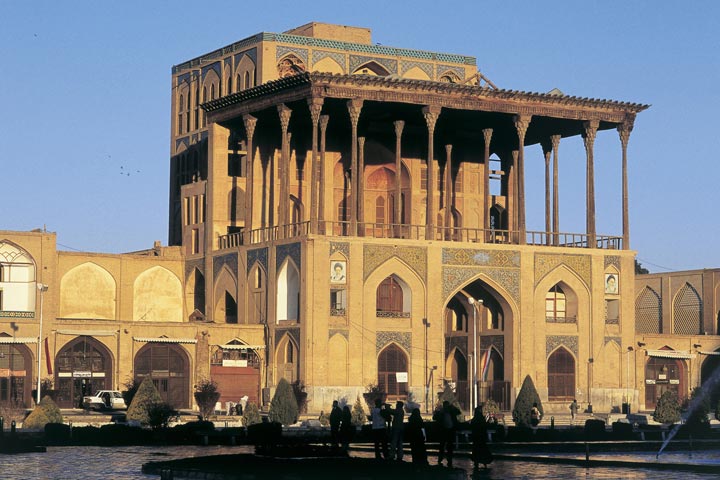
Aali Qapu Music Hall cannot be compared with any of the sights of Isfahan. This six-story building, which was built right in front of the Sheikh Lotfollah Mosque and at the same time, is full of impressive beauty. This beauty starts from the entrance of the building and continues until its height.
Ali Qapu Palace suffered a lot of damage in the post-Safawi period and wars, but its unfinished glory is still stunning. This work was completed in five different stages:
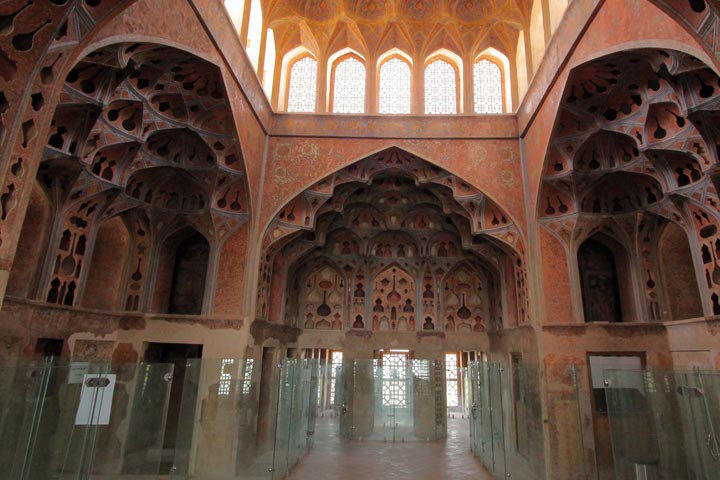
first stage
Building the building only as an entrance to other buildings and the royal palace complex
second stage
At this stage, the need to expand the building and add upper floors was felt due to the expansion of the capital and the increase in the urban population and to highlight the importance of the government seat, and for this reason, the third and fourth floors and half of the fifth floor were added.
third level
Completion of the tower-shaped building of the palace with the addition of the last floor (known as the music hall).
The fourth stage
In the next step, adding a porch towards Naqsh Jahan Square to increase the length of the palace
The fifth stage
The addition of 18 columns to the porch with the space created in the previous stage, in addition to the creation of royal stairs and the construction and completion of the building's water supply system to transfer water to the floors, especially the copper pond of the porch
Look at the whole complex of Naqsh Jahan Square from the high balcony of Aali Qapu and remember this eternal image.
Address: Naqsh Jahan Square
Visiting hours: 9:00 to 18:00
Vank Church Museum, a masterpiece of Armenian Islamic architecture
Vank Church is one of the sights of Isfahan, whose fame is linked with the history of the city. The church, which was built during the time of Shah Abbas II to settle Armenians in the city, is the beating heart of Jolfa neighborhood. Vank Church is a combination of Armenian-Islamic architecture with a dome standing out over it. The entire church is full of breathtaking beauties that will make your eyes sparkle when you see each of them. From the architecture of the building to its smallest decorations. Paintings that push your head back to follow the story.
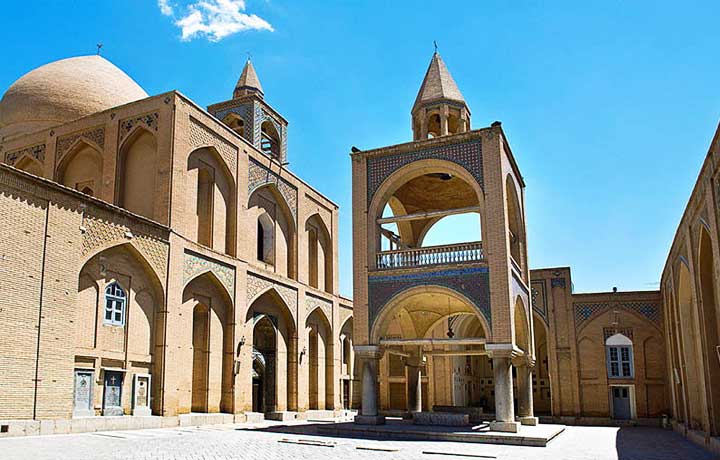
This building, which is still active and is a center for worship and performing religious acts, has a magnificent museum next to it. In Vank Church Museum of Isfahan, very valuable works are kept, each of which is a long historical narrator. Perhaps one of the most famous of these works is tarmoi, which has a sentence from the Torah engraved on it, and you can see it with the help of a microscope.
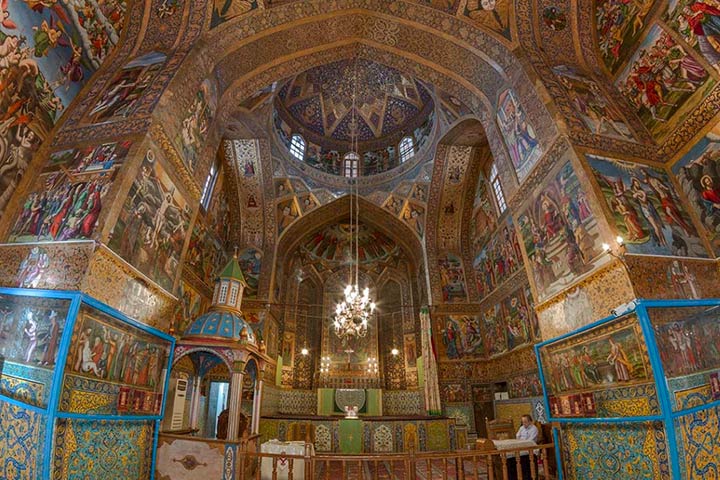
What can be written about the beauty of this collection is not enough. One should go to Isfahan and touch Vank closely. Don't forget its famous and special cafes while visiting Jolfa.
Address: Jolfa neighborhood - Church Vank alley
Visiting hours: 8:30 - 17:30
Jewelry house Isfahan Handicraft Kindergarten
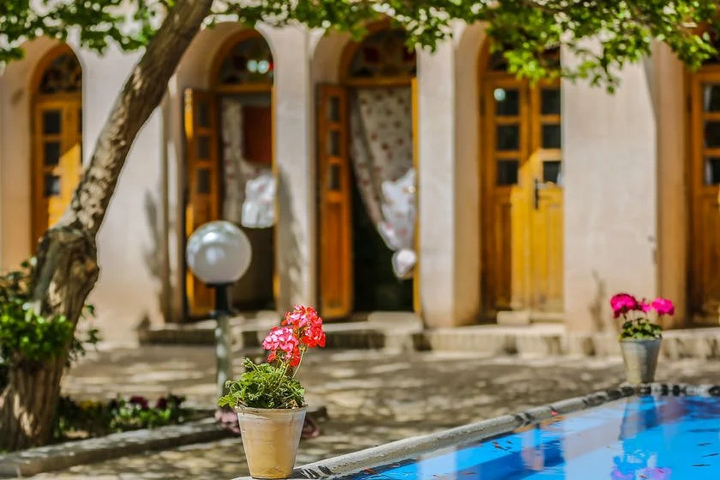
Among the sights of Isfahan, historical houses are always very important. Visiting historical houses is a big part of your trip to Isfahan. The Javaheri house is one of the oldest historical houses in Isfahan. This house is located on Ibn Sina Street in Isfahan. In 2006, they turned the jewelry house into an Isfahan arts and crafts workshop. The general shape of this house is square. In every corner of its yard, clay pots and geranium flowers have been placed. This two-story building has very beautiful and unique decorations and architecture. When you enter the yard of the jeweler's house, you will be reminded of the good old days at your grandmother's house.
This house has colored glass and sash doors. Also, a beautiful lapis lazuli pond stands out in the middle of the yard. Leaving aside all the beauty of the architecture and its decorations, you should know that in this beautiful house, you can learn more about Isfahan handicrafts. Also, if you are looking to buy Isfahan souvenirs, you can count on Jawaheri House. Visiting this house is free. So make sure to include it in your itinerary.
Address: Isfahan, Ibn Sina St
Visiting hours: weekdays except holidays from 8 am to 4 pm
Cost of visit: free
Bird garden Watch the life of decorative birds
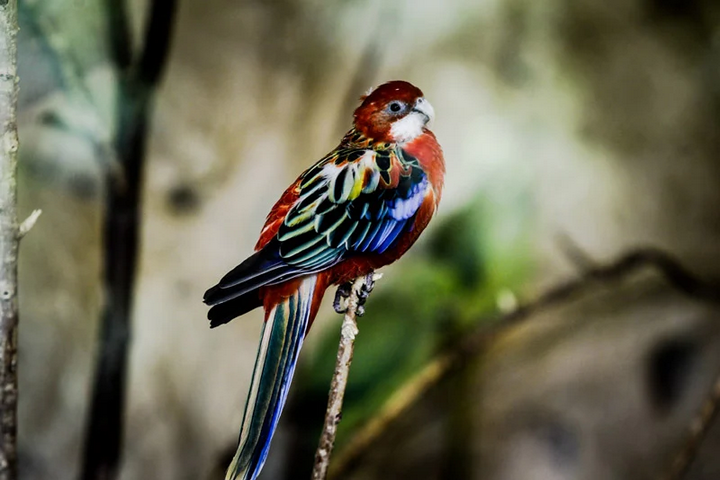
The bird garden is one of the most special places to visit in Isfahan. This garden is located on Alfat Street. In different cities of our country, there are different gardens called bird gardens. Birds are very beautiful creatures. Every bird is a canvas. Some birds have very special colors that you have not seen in nature. If you are interested in watching these beautiful animals and God's special creatures, it is better to visit Isfahan Bird Park. This garden was put into operation in 1375. Isfahan bird garden is located in a land with an area of 55 thousand square meters. The internal area under the mesh reaches about 17,000 square meters. The total area of Tori is about 40,000 square meters. In this garden, they have used 16 movable columns, each of which is about 32 meters high. In this way, the birds do not need to be in cages. This large net prevents them from leaving. At the same time, they don't put the birds in small cages to be disturbed.
In fact, maybe the principle of visiting animals is the same. We are not supposed to put animals in cages and turn their lives into captivity and prison in order to enjoy watching them. In this beautiful garden, birds fly freely. They are used to humans. So if you are lucky, maybe a very beautiful and colorful parrot will sit on your shoulder. More than 130 different species of birds live in this garden. From peacocks to beautiful colorful parrots, you can see them in this garden. Visiting this garden will be very attractive and exciting for all age groups.
Address: Isfahan, Elfat St., Najvan complex, next to Zayandeh Rood beach
Visiting hours: the first six months of the year from 9:00 to 19:00 and the second six months of the year from 08:30 to 16:30
Cost of visit: 25 to 35 thousand Tomans
The house of Moshir al-Mulk, Isfahan, close to the sights of Isfahan
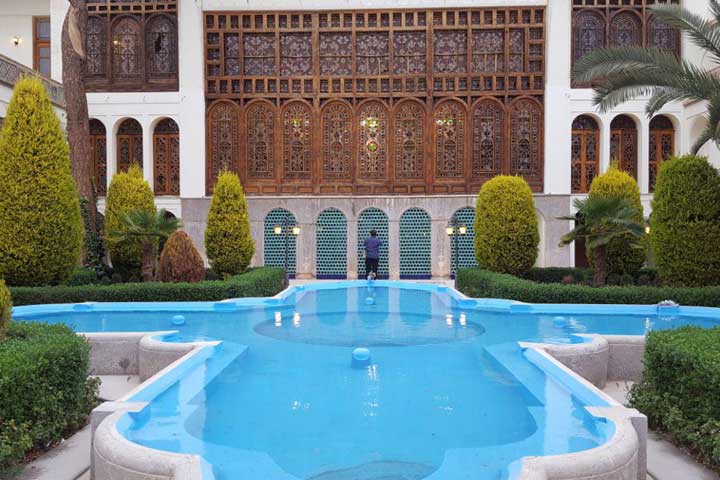

This house belongs to the Moshiransari family, one of the Mustafians and secretaries of the Safavid court, which was built like many aristocratic houses of its time. The intimate and warm soul of Iranian architecture is breathed into the brick by brick of this building. This work was registered in the list of national works of Iran on 19 February 2008.
In the house of Moshir al-Mulk, Isfahan, there is the same feeling and good condition of the old Iranian houses. Its interior decorations are as beautiful and magnificent as an aristocratic work that delights tourists. Hayat Delbaz, water pond, gardens are among the other impressive beauties of the building. Sash windows decorated with colored glass give the house the most colorful effect during daylight hours. If you want to see one of the most beautiful and relaxing sights in Isfahan, be sure to visit this house.
Address: Hatif Street - Moshir Street - the beginning of Harounieh Street
Visiting hours: 8:00 to 17:00
Tomb of Baba Qasim in Isfahan, a paradise left from the Ilkhanid period
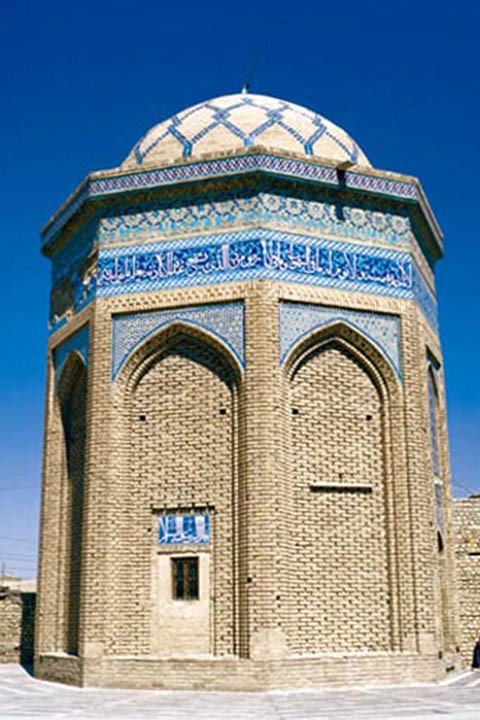
There are so many places of interest in Isfahan that you may not have heard the name of Baba Qasem's tomb among all these historical monuments. It is good to know that this tomb with its beautiful and wonderful architecture is definitely one of the places you should not miss when visiting Isfahan. Baba Qasim was one of the great mystics of Isfahan in the 8th century, and because of his great respect, the people of that period addressed him with the title of Baba. Baba Qasim lived among the people of Isfahan for many years and taught in a school built in his name in Toguchi neighborhood. Until after his death, he was buried near the same school and one of his students, named Suleiman Abi Al-Hassan Talot Damghani, built a beautiful tomb for him.
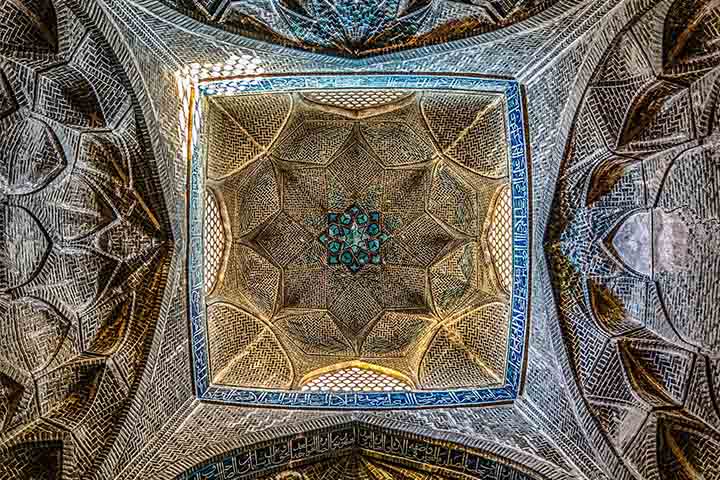
Baba Qasem Tomb in Shahshahan neighborhood of Isfahan, in addition to the spiritual and pleasant atmosphere, is one of the most beautiful architectural symbols of Ilkhanate era in Isfahan. A building with a very high height that has an 8-cracked dome. Both cracks of this dome are decorated with building lines and azure mosaic tiles on a brick background with divine names. Many historical inscriptions with different themes stand out beautifully in this building. Shabestan Bana will definitely blow your mind with its stunning decorations. The vault of the nave is made with unique Moqrans brickwork and its combination with turquoise glazed brick evokes a heavenly space. In short, if you have enough water, go and visit one of the most beautiful places of Isfahan in the Ilkhani period and one of the most beautiful places of Isfahan.
Address: Ibn Sina Intersection - Allameh Majlesi St. - Baba Qasem Alley
Visiting hours: unknown
Jolfa neighborhood, a stunning fusion of Iranian and Armenian art

Now it's time to walk a little in the alleys of Isfahan and see the old and beautiful texture of the city closely. Jolfa neighborhood of Isfahan is one of the most special places to visit in Isfahan, with amazing architecture that shows a beautiful combination of Islamic and Armenian art. During the time of Shah Abbas, the Armenians who came to Isfahan by order of this Shah to promote industry, settled in this neighborhood. Vank Church and Bethelhem Church are also located in the same neighborhood, which you cannot miss seeing. Chaharsouk Jolfa neighborhood is also one of the most historical areas of this area, where you can see new manifestations of Iran's history when you walk in it. Indeed, one of the most important attractions of this neighborhood is shopping. There are markets with old architecture and the style of the past in this area, where shopping is both an omen and a spectacle.
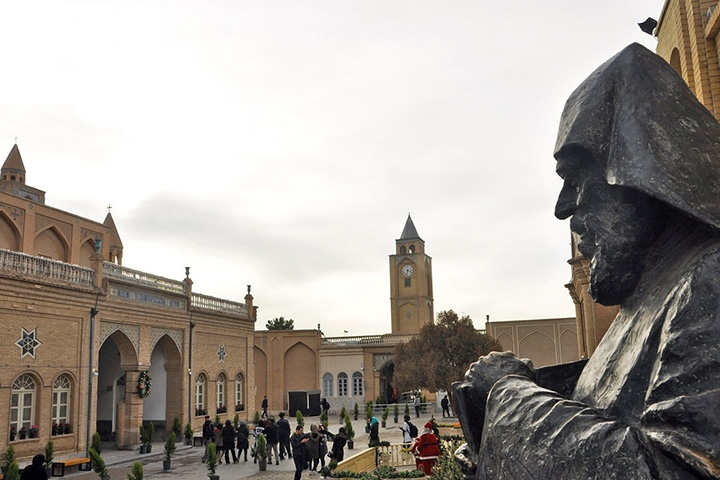
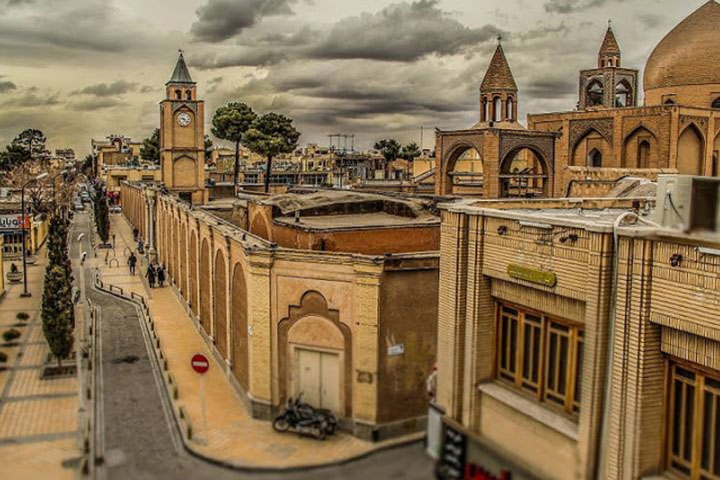
Address: Julfa neighborhood
Visiting hours: day and night
Safeh Mountain, one of the most exciting places to visit in Isfahan
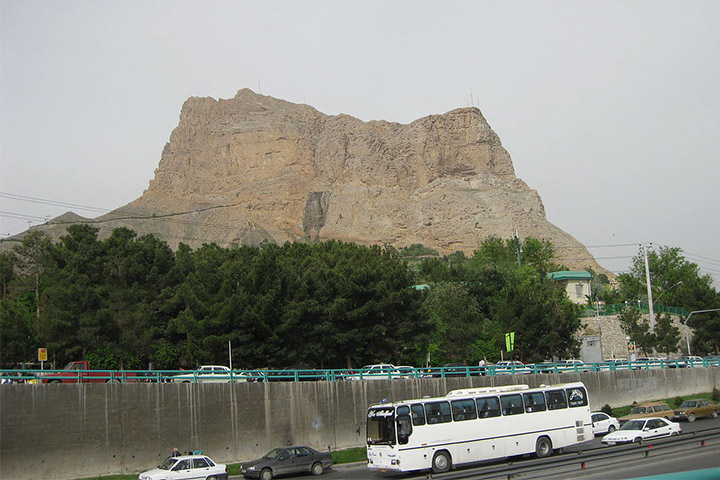
After all this sightseeing in historical places and masterpieces of art and architecture, it might not be bad to introduce you to one of the sightseeing places of Isfahan, which gives life to exciting entertainment. The mountain resort of Safeh, which Isfahans call Safeh mountain, is located around the high Safeh mountain near the city of Isfahan. This pristine and beautiful area will make you a happy and exciting day with all kinds of first-class facilities. Safeh Mountain is at the end of Isfahan's Safeh Martyrs Boulevard, and in addition to recreational and sports facilities, you can also visit the Tomb of the Unknown Martyrs.
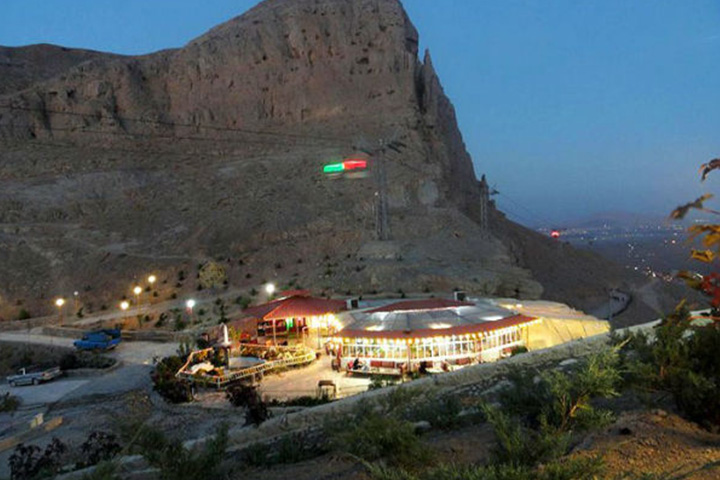
The peak of Mount Safa is known as the roof of Isfahan. From the top of this mountain, you will have an eye-catching view of beautiful Isfahan and its surroundings. In this area, there is a wild park with all kinds of beautiful and spectacular animals. It will be a great pleasure to see the springs and caves of the mountain. Seeing Shahdezh will be one of the most important and attractive parts of your visit to this mountain. If you are into hiking, climbing and rock climbing, the best option in Isfahan is to go to Mount Safa. An exciting amusement park for children and adults, zipline and suspension bridge, two cable car lines with a spectacular view, bowling hall, 5D cinema and good restaurants, make Safa Mountain one of the most exciting places to visit in Isfahan.
Address: Safeh Martyrs Highway - Safeh Mountain Recreation Complex
Visiting hours: day and night
Varzaneh, the city of white angels
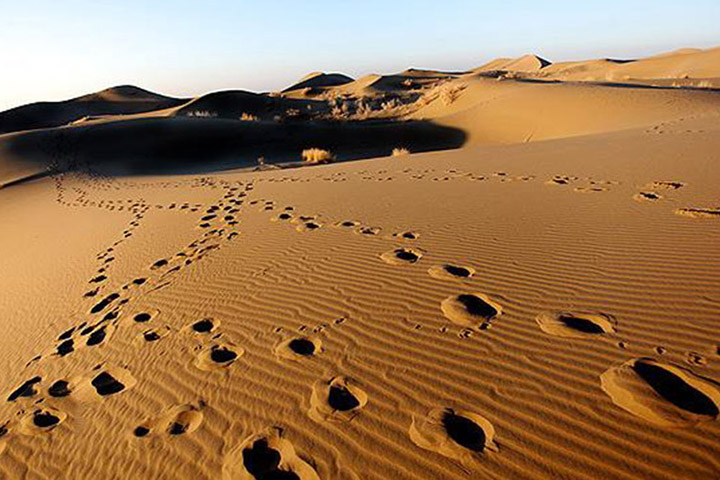
Undoubtedly, one of the most amazing and beautiful places to visit in Isfahan is Varzaneh, 105 km southeast of this city. The place is known as the city of white-clad angels because the women of this city all wear a white one-hand veil. But this is not the only attraction of this beautiful city. The old texture and numerous historical monuments make Varzaneh one of the important cities near Isfahan. The magnificent Qortan Castle belonging to the Dilmian period, the very beautiful Mirmiran house belonging to the Safavid period, the historical Varzane bridge which is the last bridge on the Zayandeh River, and the Grand Mosque of this city belonging to the Timurid and Seljuk periods are all considered historical sights of this city.
Varzaneh's attractions are not limited to historical buildings. Varzaneh dies for the desert. Varzaneh is one of the most beautiful desert regions of Iran and one of the famous places of Isfahan, which will multiply the pleasure of desert travel for you with first-class facilities. It is not more than 30 kilometers from Varzane to the international cow pond. You should not miss seeing this beautiful lagoon. In addition, seeing the sand dunes near this city will be an inexhaustible pleasure. Artesian wells are another feature of the plains around Varzaneh, which are worth seeing. 60 km away from this city, Namak Khara lake shines beautifully.
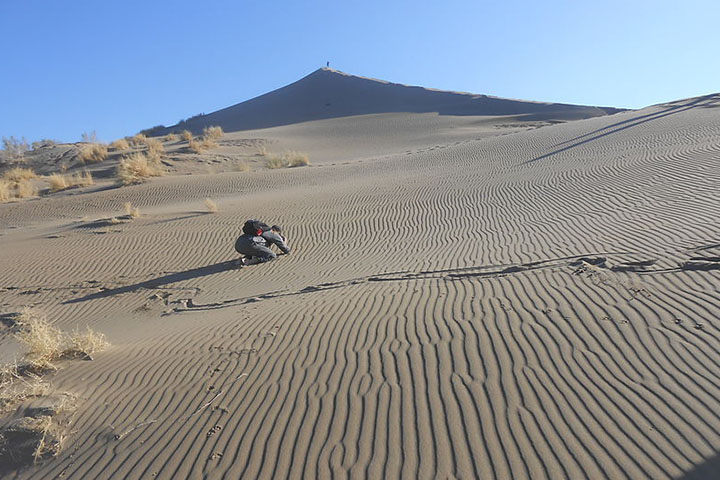
In the oasis site of this area, you can have the enjoyable experience of flying with a paraglider, four-wheel motor, off-road with two-wheel drive cars, skiing on sand, zipline, etc. In Varzaneh beach park, it is also possible to use various activities such as pedal boats. Restaurants with delicious Iranian food and ecotourism accommodations are other facilities of this area. So, during your visit to Isfahan, set aside a day to visit Varzaneh and make some money.
Address: 117 km east of Isfahan
Visiting hours: day and night
Museum of Decorative Arts, a world of Iranian designs and motifs in Rakibkhane mansion
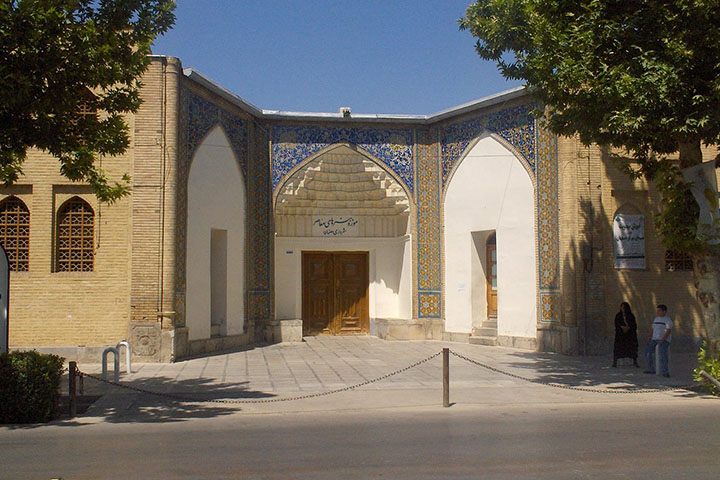
In the center of Isfahan city, near Ali Qapu and Chehelston Palace, Isfahan Museum of Decorative Arts or Rakibkhane Mansion is located. This beautiful and magnificent mansion was established during the time of Shah Abbas, as one of the buildings of the Safavid government house, to store riding equipment and state stables. Just a simple visit to this eye-catching mansion with a pleasant courtyard and soulful greenery will make your day. How about visiting the halls and rooms of the Rakibkhaneh mansion with its stunning plaster and mirror work decorations.
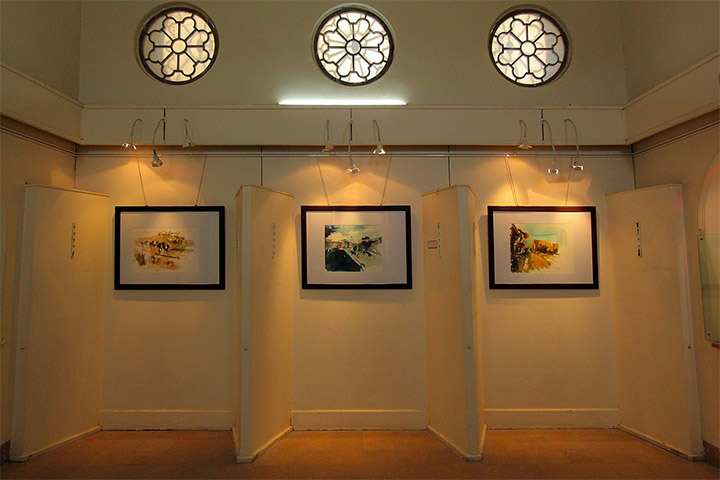
Isfahan Museum of Decorative Arts with exquisite objects from all over Iran and especially Tehran Museum of Decorative Arts started working in this spectacular building in 1375. This museum will blow your mind with objects from all over Iran's history, especially the Qajar and Safavid periods. The different sections of the museum include writing and calligraphy, lacquer and oil works, painting, wooden works, handwoven and water-based works, metal works, pottery and china. These eye-catching decorative objects are beautifully arranged in showcases so that you can visit them while walking through the halls of the mansion. So, if you want to be embraced by Iranian art for a few hours, the Museum of Decorative Arts is the best option among the sights of Isfahan.
Address: Stendari St. - in front of Isfahan Campus University
Visiting hours: 9:00 - 13:30
14:30 - 19:00
Atashgah, a relic of the Sassanid era
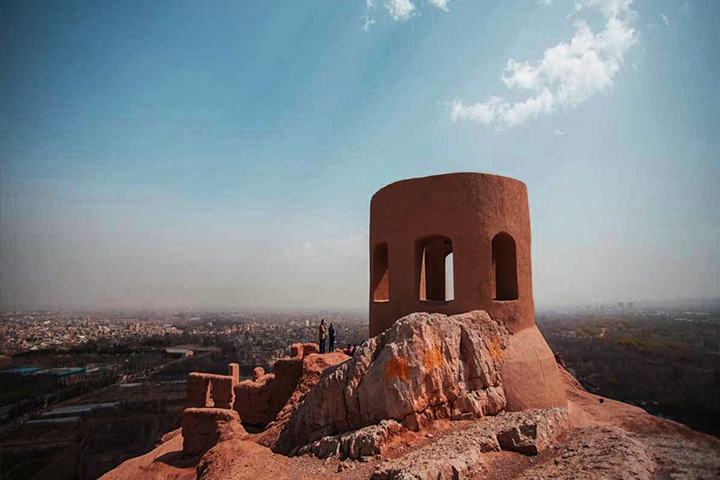
If you want to see one of the three very old ancient monuments in Isfahan, you should visit Isfahan Fire Station. This fire pit is located eight kilometers west of this city and some date its materials to 7000 years ago. The main building of this hearth, which is located on a mountain with the same name, dates back to the Sassanid era. Atashgah has a very interesting and vast architecture that will surely amaze you. Atashgah is one of the most important fire temples of Iran in the pre-Islamic era and one of the most important sightseeing places in Isfahan for those who are interested in the culture and history of ancient Iran. The Sasanian fire pit was registered in the list of national works of Iran in 1330. Seeing this ancient work next to the historical monuments of the Islamic era in Isfahan will be a unique pleasure.
Qeyseriyyeh market, one of the most important markets of the Safavid era
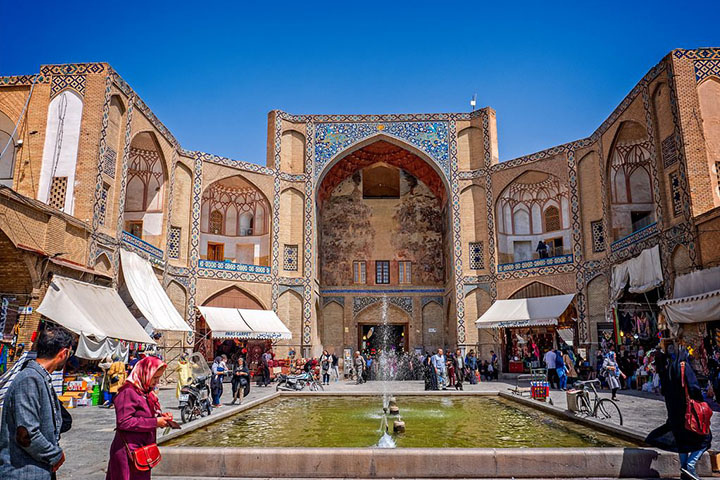
Is it possible to go to Isfahan and not visit the famous Qeyseriyyeh market? One of the most beautiful places to visit in Isfahan, in the north of Naqsh Jahan Square, in the heart of the historical context of this city, is the Qeyseriyyeh Bazaar. This market, which was built in the Safavid period and connects the new neighborhood of Isfahan to Isfahan of the Seljuk era, is also considered one of the most important historical markets in Iran. This national work was registered in 1317 and has continued to operate as a busy market with all kinds of original handicrafts of Isfahan until today. It is interesting to know that some shops in this market have been offering the same type of goods for 400 years.
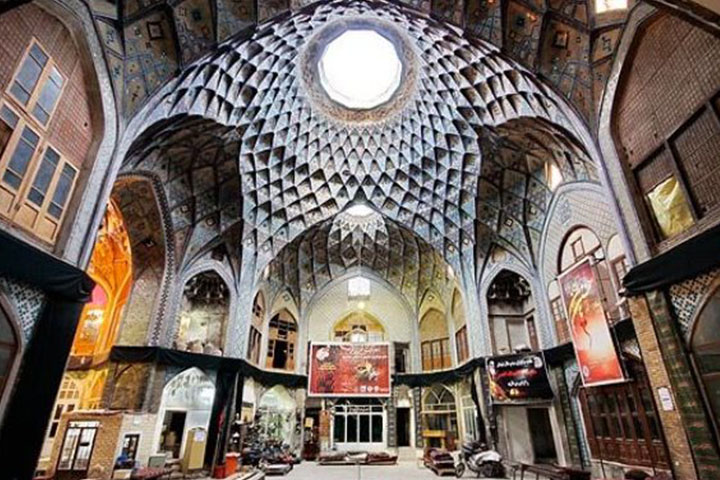
Qeyseriyyeh at the entrance of the market, numerous schools and mosques, caravanserai of Shah Abbasi and palaces and timchehs, each of which is dedicated to a job, are all spectacular parts of Qeyseriyyeh market. Sardar Qeyseriyyeh is considered one of the most exquisite masterpieces of the Safavid era with its stunning tiles and breathtaking paintings. In addition, you can see a sign of Safavid era art in every corner of the market. Seeing the architectural beauty of the market side by side, you can buy the best souvenirs and handicrafts of Isfahan in the Qaisarieh market. Don't forget to walk among the hospitable people of Isfahan and the old shops of this area, who have a lot to say about half the world.
Address: Hakim St
Visiting hours: 8:00 a.m. to 10:00 p.m
Tomb of Sheikh Abdul Samad Natanzi, Nagin Shahr Natanz
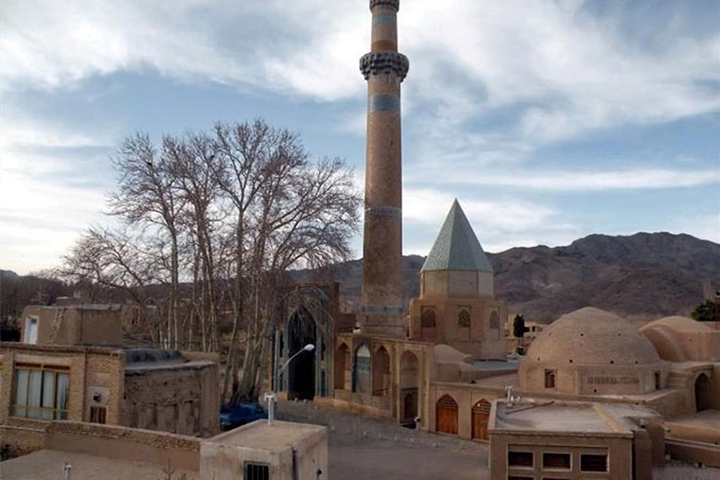
One of the most important places to visit in Isfahan, which you must include in your Isfahan tour list, is the historical city of Natanz. On the way to Isfahan, you can also visit this beautiful historical city and visit its unique sights, especially Natanz Jame Mosque and the tomb of Sheikh Abdul Samad Natanzi. This building, which was registered in the list of national monuments of Iran in 1311, is definitely one of the most beautiful tombs that you can see in Isfahan. A historical building related to the era of Dilmian and Ilkhans, which will take your heart with its art and architecture as well as its spiritual atmosphere.
Sheikh Abdul Samad Natanzi was one of the mystics and Sufis of the 7th century Hijri who had many disciples and followers around him. After the death of this pious mystic, one of his disciples built this tomb in his memory. The very tall blue octagonal dome of this building will catch your attention from the moment you enter. The inside of the building invites you to a paradise of Iranian art with its delicate tiling - some parts of which have been looted by foreigners - and flawless plasterwork. Remember, visit the thousand-year-old mosque of Natanz near the tomb of Sheikh Abdul Samad Natanzi and be proud of the art of your Iranian predecessors.
Address: Natanz - Malik Ashtar Street - Natanz Jame Mosque
Visiting hours: 9:00 - 17:00
Minar of Forty Daughters, a 40-meter high view
In the Joibare area of Isfahan, a minaret with a height of 40 meters attracts the attention of every traveler and passerby. The inscription recorded on this minaret tells about the year 1112 and considers this minaret to belong to the 6th century AH. This is the fifth oldest minaret with inscriptions in Iran. The main feature that separates the minaret of Forty Daughters of Isfahan from other known minarets in this city is the large window that is worked on this minaret and its direction is towards Qibla.
The height of the minaret was more than 40 meters in the past, but with the passage of time, its height decreased.
The reason and proof for the chosen name of this minaret has not yet been obtained, but the hypotheses say that there may have been a building next to this minaret at a certain time, which was exclusively for women, and it no longer exists today. For this reason, this minaret borrowed its name from it.
Another interesting story that is told about this minaret is related to fortune-telling of young girls. The old people of Isfahan believed that this minaret is a fortune teller for lucky girls. If they pay their vows at the foot of this minaret and offer walnuts and raisins to passers-by, their luck will improve.
The people of Joibare neighborhood also know this minaret by the name of Garland. Garland was an English missionary who came to Iran at the beginning of the 20th century and lived near Minaret.
Address: Quds Square - Soroush St
Visiting hours: day and night
Jame Atiq Mosque, an authentic gem of Islamic architecture
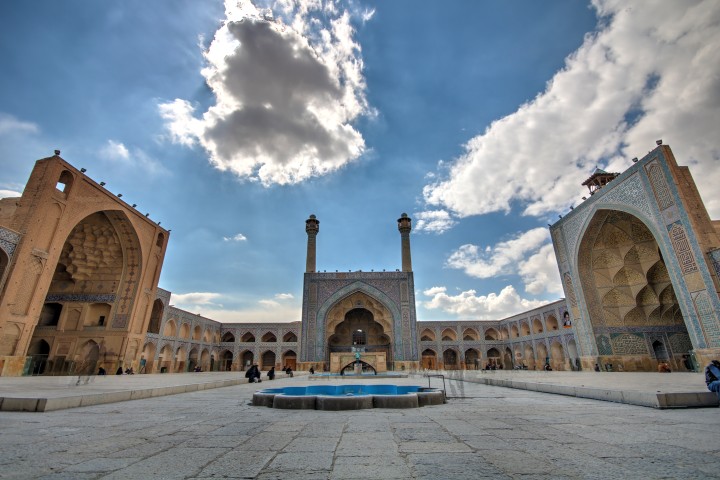
Jame Atiq Mosque of Isfahan is the oldest historical building in Isfahan. The construction date of this four-evan mosque is considered to belong to the Seljuk period. The building of Iran's historical period, whose greatness and glory is still known after years and centuries. The beautiful building is the crown of all the historical buildings that have been identified until today. Atiq Jame Mosque is also known as Isfahan Jame Mosque and Juma Mosque.
This mosque is one of the most important buildings. The current view of the mosque belongs to different eras, especially the Safavid era. The main feature of the mosque is having multiple entrances. Each of these entrances can connect the many spaces of the mosque to parts of the interior. The entrances were not built at a specific and fixed time and each one is a remnant of different ages. There are different parts of this mosque that have become popular and famous because of their beauty and special historical features. One of these parts is Al-Jayto altar, which was built by the order of Sultan Mohammad Khodabandeh and its walls are enclosing.
There is also a Mozafaria school in this mosque.
Address: Majlesi St
Visiting hours: 9:00 to 18:00
Malabashi House, a world of art and dance of colored lights
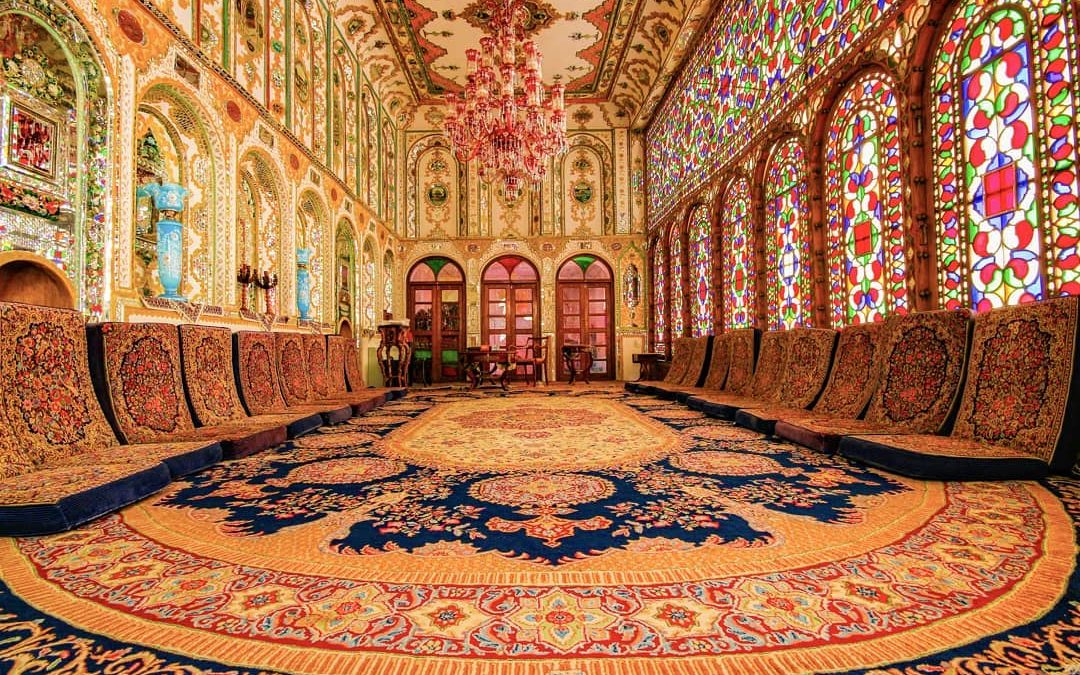
During the reign of Zal al-Stan in Isfahan, he caused a lot of damage to the nature of Iran. Zal al-Sultan was the eldest son of Naser al-Din Shah, who, due to being born to a non-Qajar mother, could never become the king's crown prince and become the king after him. This was the reason for Zal al-Sultan's grudges. He tried his best to do a lot of damage to show his strength. For this reason, he is known as Zal al-Sultan, which means the king of darkness.
Zal al-Stan destroyed all Safavid works or did the most damage to them. Also, it completely destroyed many native animals such as maral and tiger that lived in the Miankala region. Zal al-Stan's wife, who was a pious and God-knowing woman, protested against these behaviors and got angry at Zal al-Stan's court and settled in Agha Najafi Akhund's house. To punish his wife, Zal al-Stan promised his sons that whoever kills his mother will own half of my property.
This caused uncontrollable chaos in Isfahan.
This was the beginning of the story of Malabashi's migration to Isfahan and his stay in Malabashi's house, which today is also known as Motamedi's house.
At the beginning of Malabashi's residence, this house had only two five-doors and a winter section, which was left over from the Zandiyeh period. With the arrival of Malabashi, the situation changed a lot and he added other parts to this house.
Today, Malabashi's house also has the Shahneshin section and the Nohdari room, which are among the most important and attractive rooms in this mansion.
The house is divided into two main parts. Service sector and life sector. The part that was intended for the life of the owners of this house is very warm, energetic and colorful and is made with unique lighting and design. Unlike the life sector, the service sector has a simpler, closed and serious atmosphere.
Address: Hashtbehesht West Street - Malek Street - Malabashi Alley - the first house on the right
Visiting hours: 9:00 - 20:00
The tomb of Saeb Tabrizi, a combination of originality, art and tenderness of poetry and sonnets
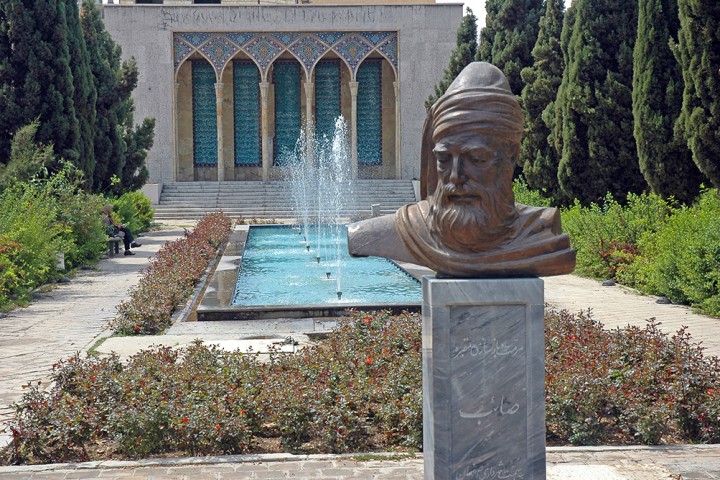
Mirza Mohammad Ali Saeb Tabrizi, who was born in Tabriz in 1592, died in 1676 at the age of 84. Saeb left an eternal name in Iranian poetry and culture. He was the greatest lyricist of the 11th century during the Safavid era.
This poet completed a style called Indian style and wrote many lasting and exemplary works. Saeb's ambitious nature and the tenderness of his poems were to the extent that he was honored to receive the title of Malek al-Shaara from the second Safavid Shah.
Contrary to popular belief, the tomb of Saeb Tabrizi is not in Tabriz city, but in one of the crowded neighborhoods of Isfahan. The architecture of this building, which was built according to the architecture of the Safavid era, was built according to the time of Saeb's life.
Saeb Tabrizi's son and grandson are also buried in this garden. The garden is covered with tall cypress trees, and its beauty and freshness is a reminder of Saeb's unique and beautiful sonnets.
Address: Saeb St., Lenban neighborhood, Saeb Garden, Tabrizi
Visiting hours: Unknown
Sheikh Bahai bath, a masterpiece of world architecture and engineering
One of the architectural and engineering masterpieces of the world is Sheikh Bahai bath. The water in this bath is heated using the "Demvegas" system. Sheikh Bahai used the methane gas obtained from the sewage of the Jame Mosque and the oil dripping from the distillery next to the bath to heat the bath water. Restorers and archaeologists believe that the date of construction of this bath belongs to 1065.
Sheikh Baha'i bath is known as the bath that is lit by only one candle.
For many years, this important and beautiful work was faced with the indifference of the authorities, but in recent years, restorers started working to protect it and its restoration began.
Address: Abdul Razzaq Street - Sheikh Bahai Alley - in the middle of Jame Mosque
Visiting hours: unknown
Isfahan restaurants
Since Isfahan is considered one of the most important tourist cities in Iran, modern and traditional luxury restaurants with high quality food have been built there, which we will introduce below.
Azam Biryani Restaurant
Azam biryani restaurant is one of the best restaurants in Isfahan where biryani is served. This restaurant dates back to 1295 and has been a hangout for biryani fans ever since. The main feature of this restaurant is the existence of four branches in different parts of Isfahan city.
The address of the first branch: Isfahan, Dolat Gate, the beginning of Chaharbagh Bain
The address of the second branch: Isfahan, Sayed Mosque Street, next to the post office
Address of the third branch: Isfahan, Kamal Ismail St., next to the gas station
Address of the fourth branch: Isfahan, Chaharbagh Bala street, Nazar intersection, next to the gas station
Shahrazad Restaurant
Shahrazad Restaurant is one of the best restaurants in Isfahan, with a history of 50 years. The distinctive features of this restaurant are the high quality of food, excellent service and its old and beautiful decor. The decor of Shahrazad restaurant is a beautiful combination of colored mirrors and old and original wall paintings.
Address: Chaharbagh Abbasi St., Abbas Abad St., Isfahan
Jarchibashi restaurant
The building of this restaurant was built during the Safavid era around 1019 AD and it was a public bath at that time. However, Haj Seyed Ahmad Eftekhari in 1382 to 1390, after restoring and renovating this historical building, turned it into a restaurant and reception hall with a capacity of 250 to 300 people. Iranian and traditional dishes are served in this restaurant.
Address: Sepeh St., Hakim St., Qalandarha Bagh Alley, Sultan Jarchibashi Historical and Residence Complex
Isfahan shopping centers
For many people, it is not possible to introduce Isfahan without introducing its important shopping centers. You can find souvenirs of the city of Isfahan or products of the most prestigious global brands in these shopping centers. Among the most important shopping malls in Isfahan are City Center of Isfahan, Osan Isfahan Commercial Complex, Naqsh Jahan Square Pavilions, Isfahan Park Complex, Orkideh Isfahan Administrative Commercial Complex, Arg Azim Jahannama Shopping Center, Jolfa Shopping Center of Isfahan, Martin Commercial Complex, Kausar Commercial Complex, He mentioned Azadi Administrative Commercial Complex, Maryam Commercial Complex, Isfahan Grand Bazaar or Qaisarieh Bazaar, Art Bazaar, Nujan Commercial Complex.
